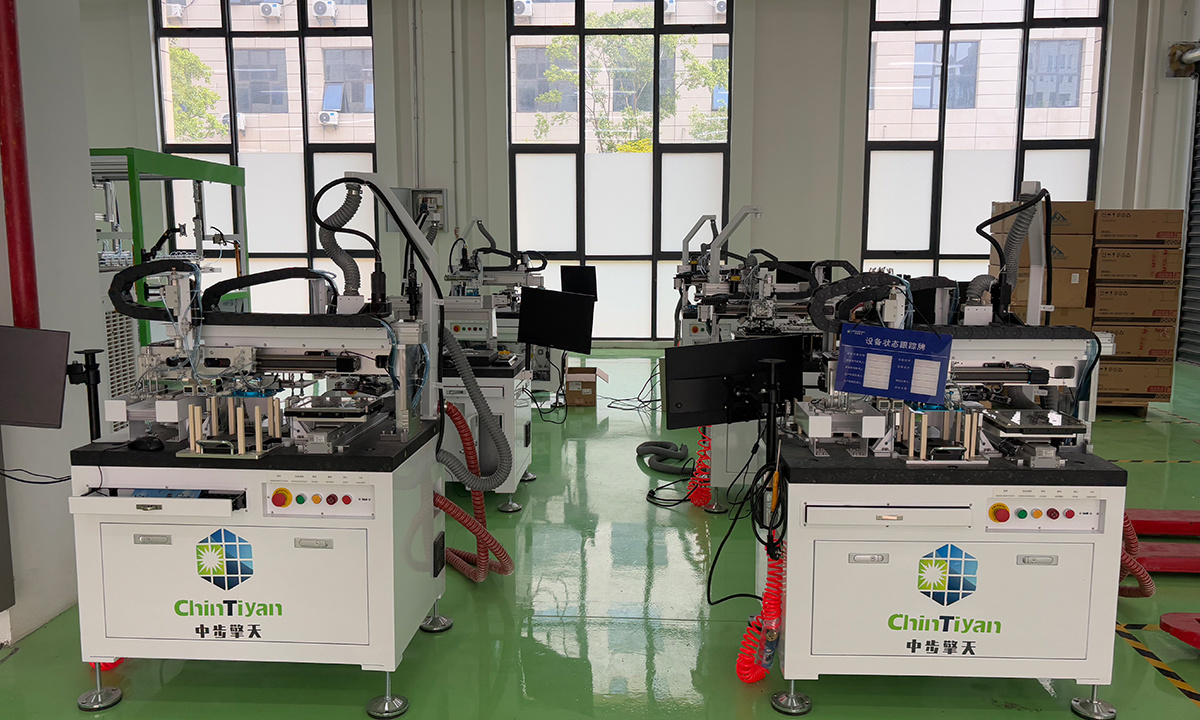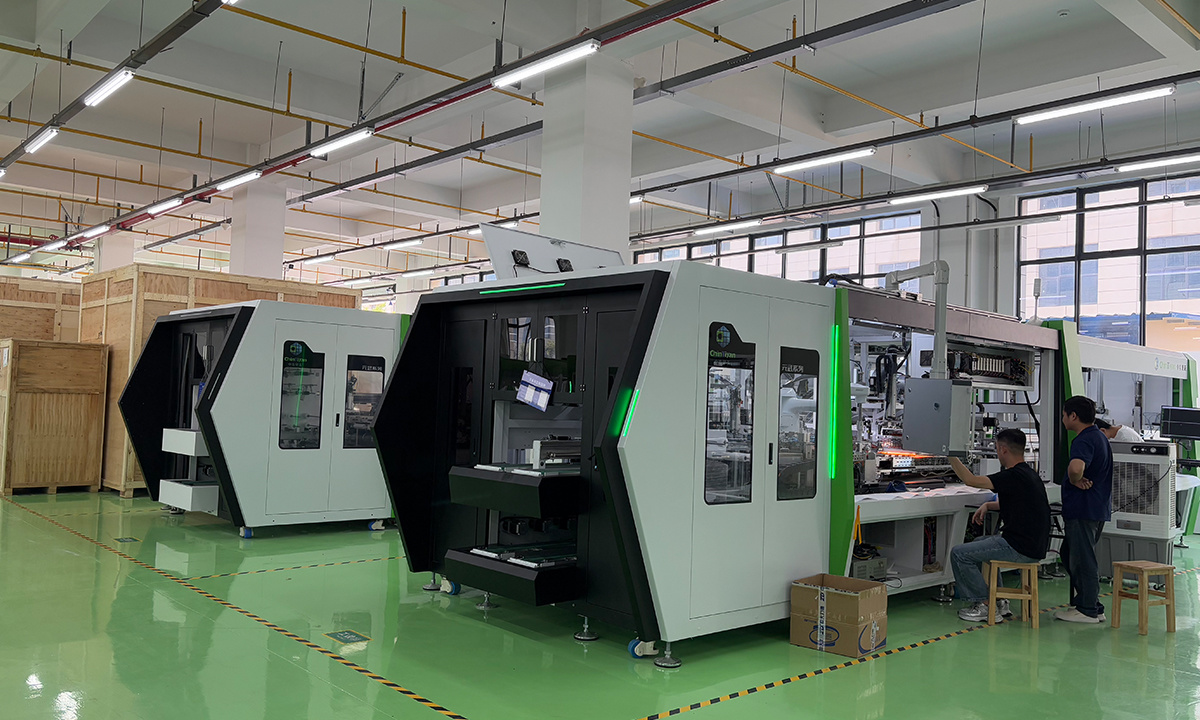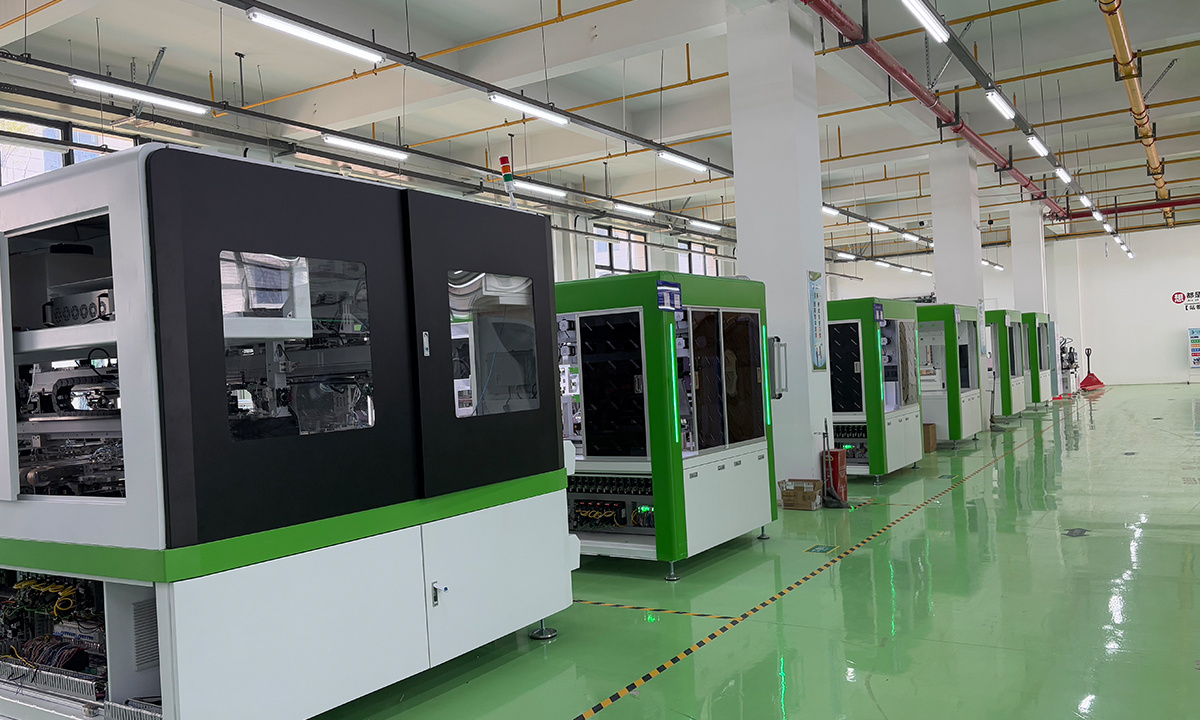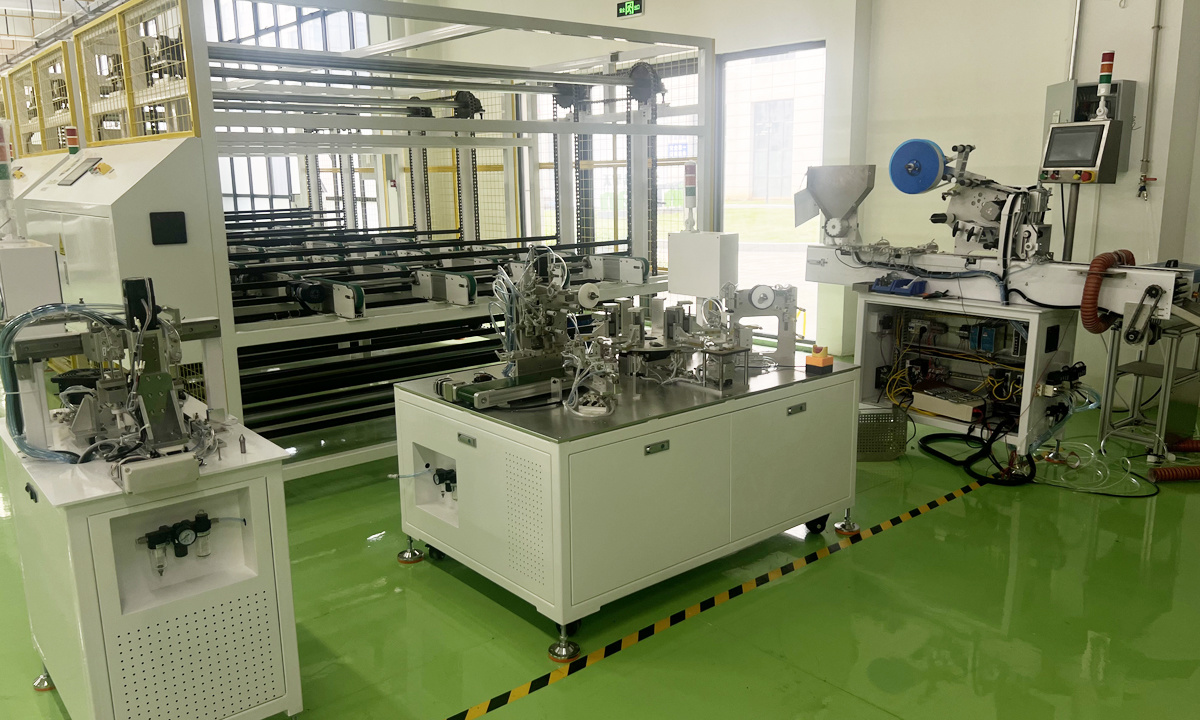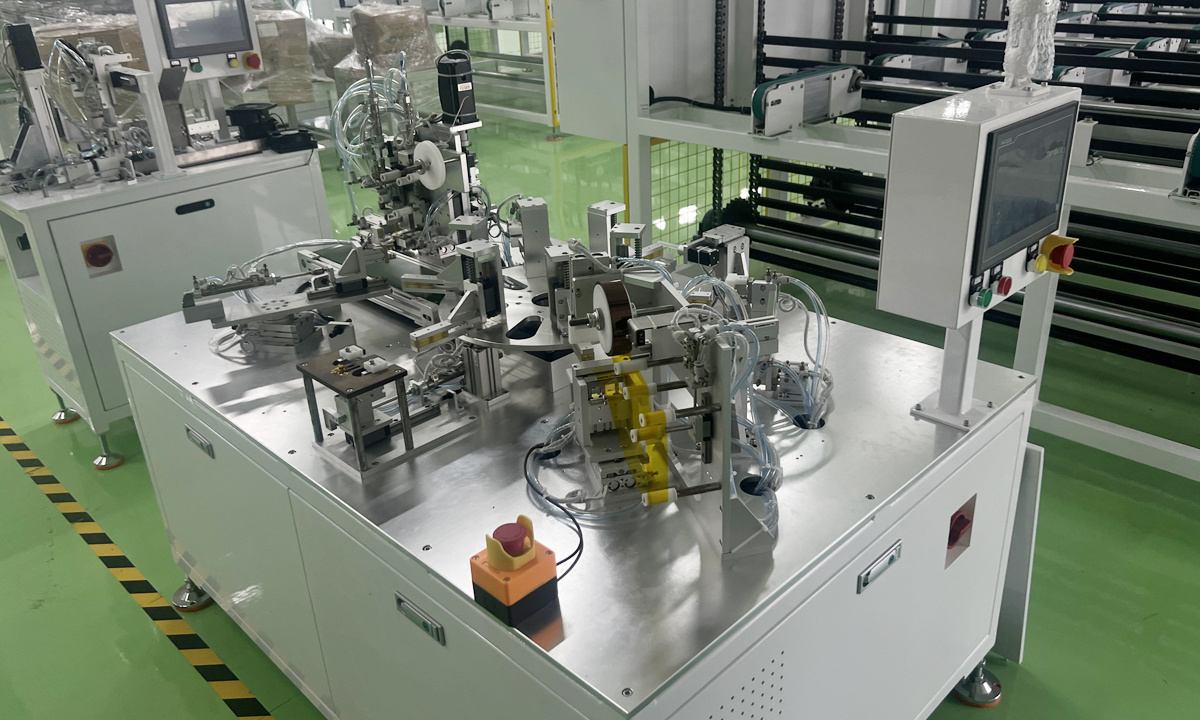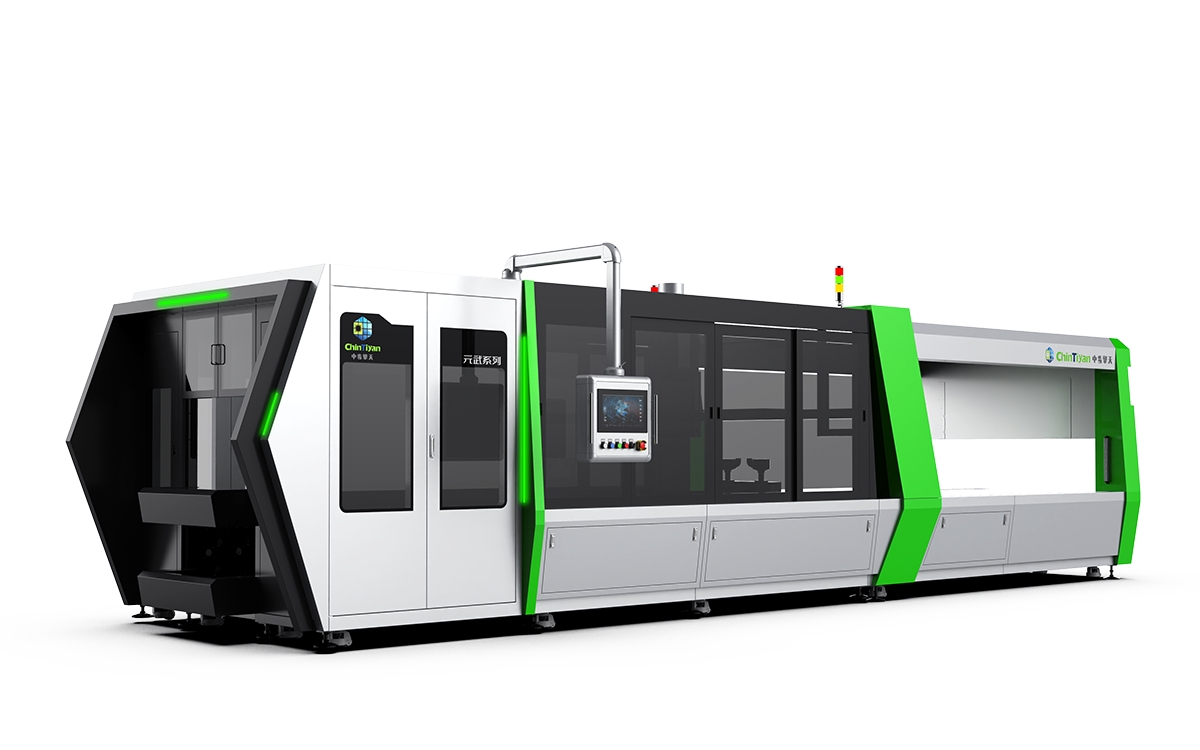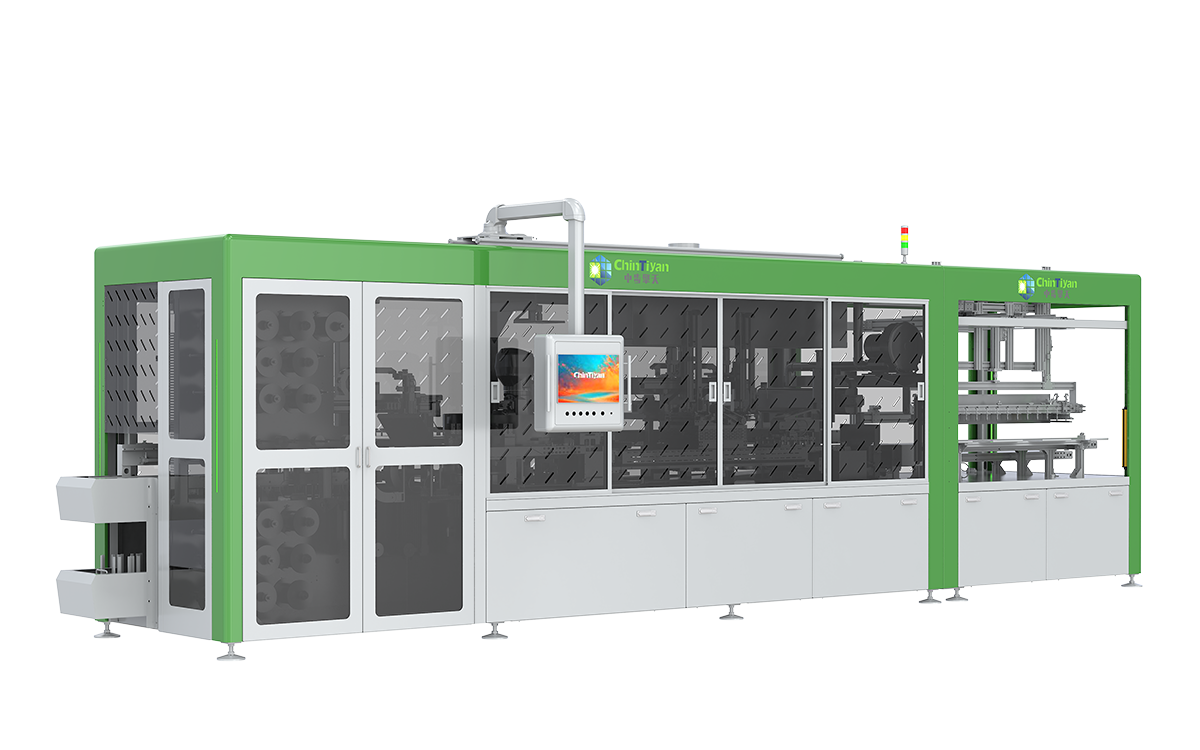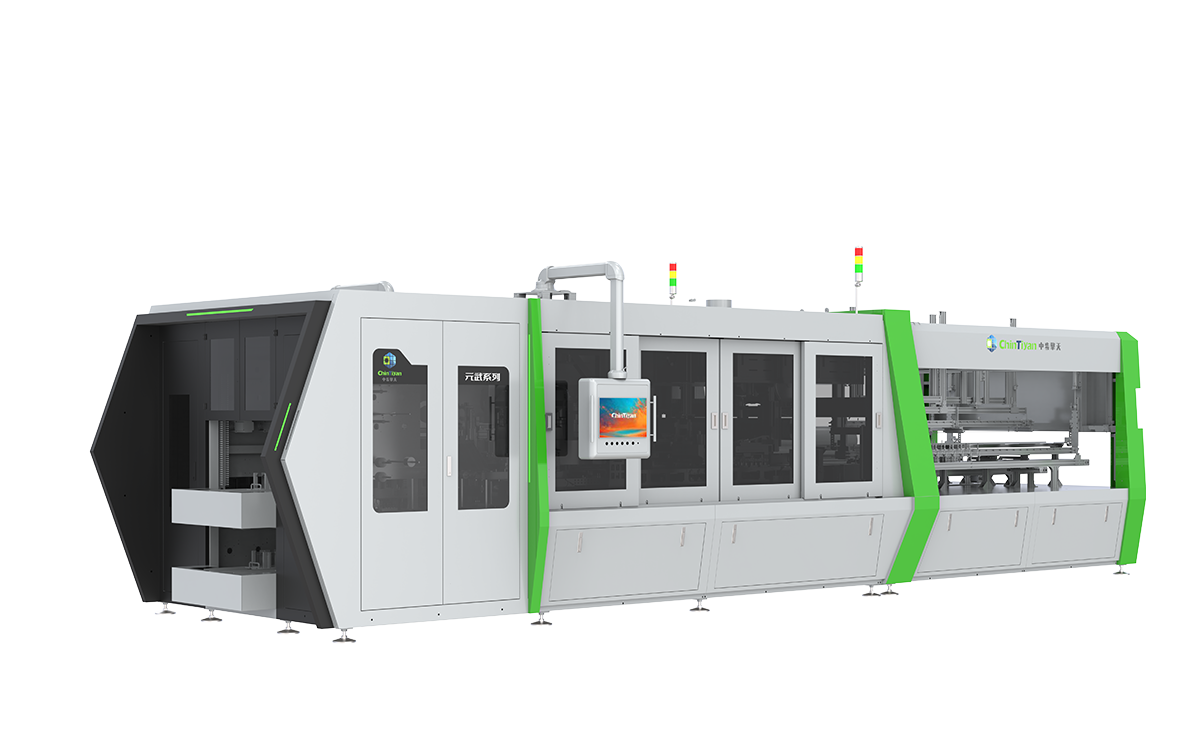Non-Destructive Scribing Machine
Classification:
High-Speed Non-Destructive Scribing Machine 1.Capacity: Half-cell≥ 6800pcs/h 2.Scribing Speed ≤500mm/s 3.Split Rate ≤0.05%
Contact:
Details Introduction
CTC80S High-speed Non-destructive Scribing Machine is an automated production equipment for non-destructive scribing of crystalline silicon solar cells. The equipment can realize non-destructive cutting of solar cells. It integrates various advanced automation technologies such as PLC, sensors, servo, laser, CCD vision, etc., and realizes fully automatic processing from cell loading, slotting, non-destructive lobing, separating, inspecting and discharging. Designed capacity: 166-210mm solar cells, dichroic cutting ≥ 6800pcs/h.
Adopting non-destructive scribing technology, the damage to the surface of the solar cell is very small, and the processing process generates very little dust, so there is no need to worry about fire prevention. Non-destructive processing does not require mechanical breaking, no micro-crack pattern after cutting, and good mechanical properties.
Laser Grooving of Regularized Cells. Slotting Length≤2mm
The solar cell conveyor transports the cells to the CCD inspection station.
The drying system will remove the residual water stains on the surface of the cell.
Slice Cooling System
Comprehensive positioning accuracy, positioning deviation ≤±0.05mm
Non-destructive cutting technology. Very little damage to the cell surface
Parameter
Equipment Parameters
| Model | CTC80S High-speed Non-destructive Scribing Machine |
| Cell Size | 166 x166~230x230mm. |
| Thickness 120~220µm | |
| Uptime Rate | ≥ 98% |
| Production Capacity | Duplexing ≥ 6800pcs/h |
| Split Rate | ≤0.05% |
| Scribing Speed | ≤500mm/s |
| Average Laser Power | 50 W/300-500W |
| Laser Life/Warranty | Warranty 20000 hours |
| Detection | CCD |
| Feeder Detection | Positioning and defect detection (chipping, chipping, cracking, 90° flip, dirt, scratches, etc.) |
| Comprehensive Positioning Accuracy | Positioning Deviation: ≤±0.1mm |
| Angular Deviation: ≤±0.04° | |
| Unloading Detection | Detection of cracks, chipped edges and corners, large and small pieces, etc. |
| Power Supply | Three-phase 380V, 50Hz |
| Three-phase five-wire system (L1/L2/L3/N/PE), into the line specification 4x16mm² + 1x10mm² | |
| Wattage | Average power 30kW, peak power 45kW |
| Laser Chiller | Cooling water: 20 L; pure water, regular replacement |
| Lobe Cooling System Water | Deionized water, or purified water |
| Air Source | Pressure 0.6-0.8Mpa; Air consumption: ≥1200L/min; air inlet main pipe using two φ16mm hose at the same time into the air |
| Compressed air quality requirements: | |
| Maximum solid particles: 15μm (Grade 3); minimum pressure dew point: +3℃ (Grade 4); maximum oil mist concentration: 5mg/m3 (Grade 4) | |
| Air Exhaust System | Top exhaust pipe diameter Φ102mm, pipe diameter required 104mm; comprehensive exhaust flow rate is more than 600m³/h; |
| Exhaust gas temperature is high, exhaust pipe is recommended to use PVC pipe | |
| PLC | Peifu Compact Industrial PC |
| HMI | Easy Control World's upper computer software includes parameter setting, troubleshooting, alarming, product statistics, status records, and so on. |
| MES Interface | Ethernet port is reserved to support TCP/Ip and Peifu ADS protocol. |
Keyword:
Non-Destructive Scribing Machine
Production Strength
What is Our Collaboration Process?
We consider after-sales service the beginning of a long-term partnership, not the end of a transaction. We provide a full-spectrum "service ecosystem" that covers the entire journey from initial discussion to stable mass production.
1.Collaboration and Delivery Process
Requirement Confirmation & Technical Discussion: We start with in-depth communication to clarify product specifications, capacity goals, and technical requirements, providing a preliminary technical solution.
2.Plan Finalization & Contract Signing: Upon reaching a technical consensus, we proceed to draft and sign the commercial contract and technical agreement.
3.Production Line Construction & Equipment Manufacturing: In parallel, you can proceed with plant construction/renovation, utility preparation, and team building. We simultaneously conduct lean manufacturing and assembly of the equipment.
4.Factory Acceptance Test (FAT): After assembly and debugging, we warmly welcome you to our facility for a pre-acceptance test to verify equipment performance firsthand.
5.Maritime Logistics & On-site Installation: Following FAT, equipment is shipped via maritime logistics to your plant. Our engineer team will be on-site to guide installation and positioning.
6.Commissioning & Site Acceptance (SAT): After installation, our engineers perform precise commissioning and complete the final Site Acceptance Test, ensuring the line meets all agreed performance metrics.
7.Training & Guided Production: We provide comprehensive operation and maintenance training, and guide you through small-batch trial production to ensure your team can operate the line independently.
8.Long-term Support & Continuous Improvement: Our comprehensive long-term after-sales service begins after mass production, including remote support, spare parts supply, periodic visits, and technical upgrade services, ensuring your sustained production and future growth.
Is BC technology the Future?
BC (Back Contact) technology is undoubtedly a key direction for next-generation high-efficiency PV modules. Its busbar-free front side offers not only superior aesthetics but also significantly reduces shading, leading to higher light absorption and increased power output. Rather than simply declaring BC as the only future,In fact, BC is a platform technology that can be combined with techniques such as Topcon HJT and perovskite tandem cells to squeeze out the last drop of efficiency gains.
Therefore, we believe BC technology will remain at the forefront of the upcoming technological transformation, making now the opportune moment to invest in BC.
What Information is Required to Establish a Production Line?
This is straightforward.
Firstly, we need to understand the type of modules you wish to manufacture: conventional or flexible, large-format or small-format, and whether any specialised processes are required. Secondly, we require details of your production line capacity requirements – be it a 50MW manual line or a 2GW fully automated dark factory.
Finally, if you have already constructed a facility for your project, we need to know the dimensions of the building; a CAD file would be most helpful if available. Naturally, should you be unfamiliar with photovoltaic module manufacturing, there is no need for concern. We shall recommend the most suitable production line design based on your market requirements.
Why We Say "NO" to Fast Quotes ?
Whilst we offer some of the most competitive pricing in the industry, we firmly believe that a well-designed production line holds far greater value than the mere pursuit of low cost. A single quotation cannot suit all. Only after gathering the necessary information and undertaking a bespoke design tailored to each product's characteristics and process requirements can we provide a quotation truly worthy of discussion.
Related Products


